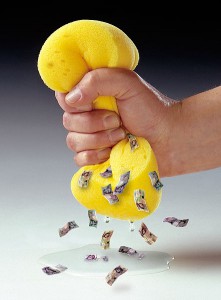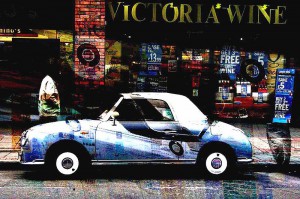Before photoshop and other means of digitally manipulating elements of an images, certain components would be physically grouped together. Paintings or hand drawing would be used as a way to seamlessly blends images together. This worked as a way of adding elements that may have seemed unrealistic, placing charaters or subjects in situations that was unusual. Color can also be used as a tool to blend images, combining black and white images eliminates working with complicating color combinations caused by surface textures and lighting. Distorting photos can also be a way of changing characteristics with out adding any extra elements. Advertisements, posters or any form of media often manipulate images with photoshop, compositions can include any interesting mixture of graphical elements.
Overlapping images on top of images can brighten a dull photo, adding an element of abstraction. More examples.






